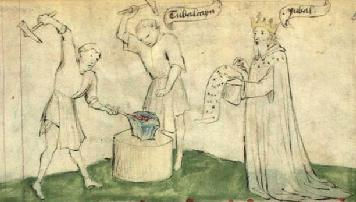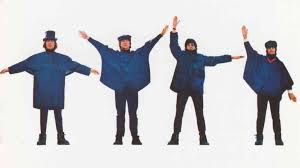Western Music Theory: Waking Up Inside the Framework. Part I: Pythagoras and Interval Ratios
- Dylan Deimler

- Aug 15, 2021
- 4 min read
Updated: Sep 9, 2021
I have spent several months working through 'The Musician's Guide to Theory and Analysis,' an attempt to expand my musical palette. I had understood a few of the "rules" of music composition and was re-using them for years. The rest of my compositional output has been either a system of trial and error, attempts at finding intervals by ear, or purposefully breaking the few rules I had learned. I think this is obvious to any trained musician who has heard my earlier work. I always assumed that if I began incorporating theory that my music would lose its individualism. That was before I realized that the "rules" are a framework that can be bent, ignored, or broken.
I was familiar with composers like Wendy Carlos and Harry Partch that had developed and practiced alternate tuning systems that can sound 'off ' to our conditioned ears. Similarly, classical music in other cultures uses noticeably unfamiliar methods. Naturally, I was curious as to the development of the western system. Was the system based on perception through hearing and vibration of what was considered beautiful? Or have our ears become so accustomed to the system that anything else is undesirable. It is, of course, probably more complex than a simple 'or' statement. As usual, I am not an expert on this subject, merely a curious person. What follows will be an exploration of this question. Perhaps at some point, I will present the information in a complete form, but for right now, let's pretend that we are figuring out bits and pieces as we go. That is, after all, more or less what is happening.
I will start and end Part I with Pythagoras: the man with the magic ratios. Percussive instruments, voice, and bone flutes predate Pythagoras. The idea that he invented music is nonsense, but he may be one of the earliest to put it into a mathematical box. Pythagoras' first interaction with musical ideas deals with a chance occurrence at a blacksmith shop. The tale was told first by Nicomachus of Gerasa in the 2nd Century A.D. and is part of the Harmonikon Enchiridion. Pythagoras was out for a stroll, deep in thought. He wondered if he could develop a tool for ears similar to that of sight (compass and ruler). He was distracted from this thought by the sound of the hammers striking anvils in the blacksmith shop. He heard numerous combinations of those strikes that sounded harmonious and one that was not. The harmonious tones were the octave, the fifth, and the fourth. Interestingly, the fourth in more modern times is considered to be melodically consonant but harmonically dissonant. We can get to the bottom of that at a later date. The problematic tone was the interval between the fourth and the fifth (a Major second). He ran into the shop and, probably very annoyingly, interrupted their work to test out these different harmonies. He concluded that the weight of the hammers was shaping the tones. Supposedly, he confirmed this by weighing the hammers and then attaching the same amount of weight to strings that he would pluck. Later he would use tension to replicate the weight of the hammers on a device called the Chordotonon. Science has revealed this story to be myth. While the interval ratios he observed would correspond to string length, changing the weight of the hammers would not have an effect on the intervals.

Pythagoras developed a following of "Pythagoreans" of which not everyone was a fan. Plato only mentions them once, saying essentially that they have tried too hard to relate astronomy to harmony and that they wasted much of their time trying to measure different sounds against one another. Some Pythagoreans did contribute to music theory, however. Philolaus created the terminology used to describe the division of the tetrachord. Archytas of Metapontum further defined the ratios of the tetrachord. They also, as a group, championed music for its therapeutic value, which seems worth noting.
It seems as though his followers have more documented advancements in music theory, yet we still think of Pythagoras specifically when discussing musical ratios. More specifically, we think of the idea that simpler ratios are more consonant. These ratios are unison (1:1), Fourth (4:3), Fifth (3:2), and Octave (2:1). However, there are other ratios such as the third, which are now understood to be consonant. Unfortunately for the legacy of Pythagoras, this "discovery" is not his to claim. The Ancient Mesopotamians used them to describe the seasons long before Pythagoras (570-495 B.C.). Whether he was aware of this or not is unclear to me at this time. The Pythagoreans were a secretive group that sought, among other things, to link spirituality to numbers, much in the same way as the Kaballah uses numbers and combinations of numbers to inform divine meaning. Perhaps, the Pythagoreans were attempting a kind of number magic when they devised or adopted their ratio system. When Addition is applied to the four unique numbers in the ratios, the result is 10. According to Aristotle, this number was "perfect," perhaps because they form a pyramid stacked in descending order from the base. This symbol just so happened to be sacred to the Pythagoreans who swore oaths in its presence.

Pythagoras may have discovered the ratios independently of earlier Middle Eastern scholars by comparing string length. These ratios would not have been noticeable on the Greek Lyre, which is tuned by tension, but maybe on the Egyptian Lyre, whose strings are tuned by length. Pythagoras' biography includes many travels to far-off places, so this is possible. However, most accounts of early acoustical experiments were done by others, including Hippasus and Theon of Smyrna, both non-Pythagoreans. Despite all of this documented knowledge, Pythagoras is still widely believed to be the originator of harmonic intervals. Maybe he was, but many scholars like Erich Frank attribute most of the developments to later Pythagoreans or other cultures, including the Egyptians, Babylonians, or other more ancient societies. Today, because of equal temperament, these exact ratios are only approximations of our modern intervals. In reality, they are irrational numbers which would have surely bummed out the Pythagoreans.




Comments